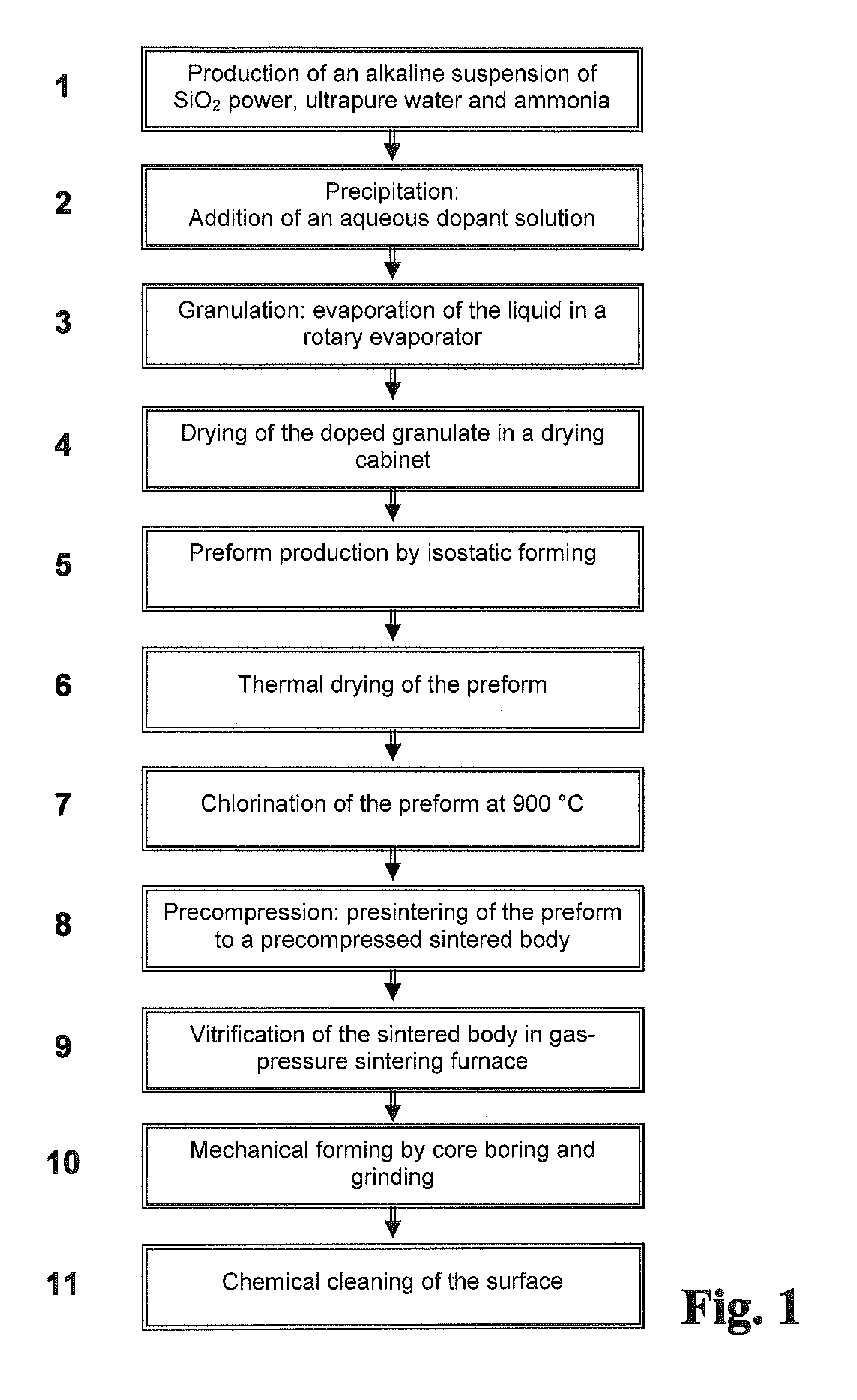Method for producing doped quartz glass
a technology of quartz glass and dopants, which is applied in the field of producing dopants, can solve the problems of fiber breakage, inability to achieve homogeneous distribution of dopants, and inability to reproduce the process for obtaining low-attenuation laser fibers in an appropriate way
- Summary
- Abstract
- Description
- Claims
- Application Information
AI Technical Summary
Benefits of technology
Problems solved by technology
Method used
Image
Examples
example 2
[0096]Another part of the precompressed sintered body was vitrified on a glass maker's lathe by zonewise melting with an oxyhydrogen gas burner at a temperature of about 2200° C. to obtain a transparent quartz glass rod having a length of 20 cm and a diameter of 20 mm.
[0097]After cleaning of the surface by flame polishing the quartz glass rod was overclad with a fluorine-doped quartz glass tube obtainable under the name “F320” from the company Heraeus Quarzglas GmbH & Co. KG, Hanau. The fiber preforms produced in this way were drawn into active laser fibers having a core diameter of 150 μm and a fiber diameter of 180 μm, and simultaneously coated in this process with a coating of UV curable acrylate with a smaller refractive index, the outer diameter of which is 205 μm.
[0098]For IR radiation of a wavelength of 1200 nm a basic attenuation of about 50 dB / km was determined for this fiber, which permits its use as a fiber laser material.
[0099]Precompressing so as to obtain a sintered bo...
PUM
| Property | Measurement | Unit |
|---|---|---|
| particle sizes | aaaaa | aaaaa |
| particle sizes | aaaaa | aaaaa |
| pH | aaaaa | aaaaa |
Abstract
Description
Claims
Application Information
 Login to View More
Login to View More - R&D
- Intellectual Property
- Life Sciences
- Materials
- Tech Scout
- Unparalleled Data Quality
- Higher Quality Content
- 60% Fewer Hallucinations
Browse by: Latest US Patents, China's latest patents, Technical Efficacy Thesaurus, Application Domain, Technology Topic, Popular Technical Reports.
© 2025 PatSnap. All rights reserved.Legal|Privacy policy|Modern Slavery Act Transparency Statement|Sitemap|About US| Contact US: help@patsnap.com

